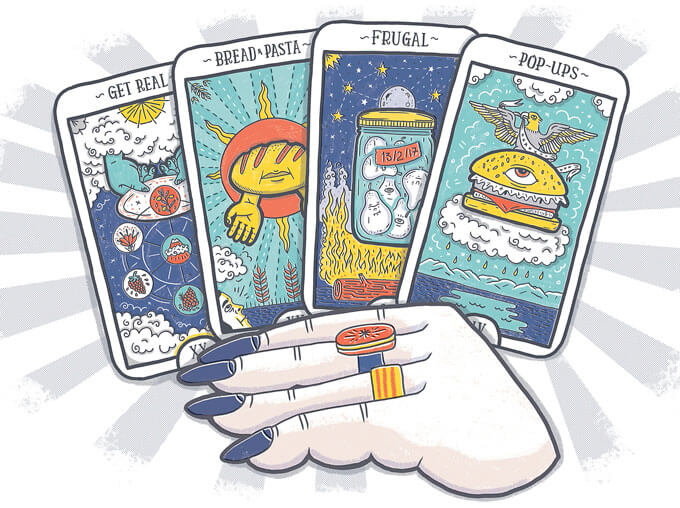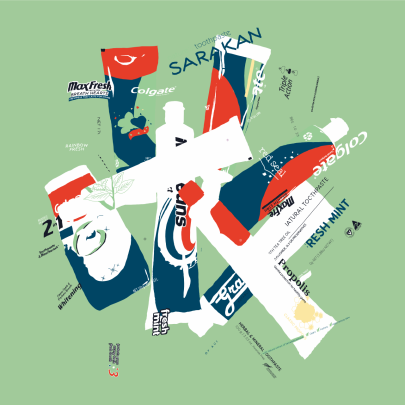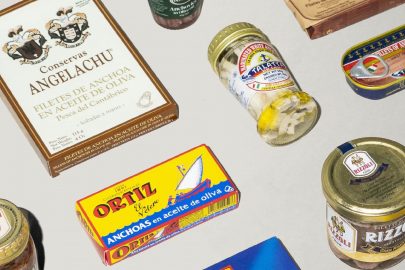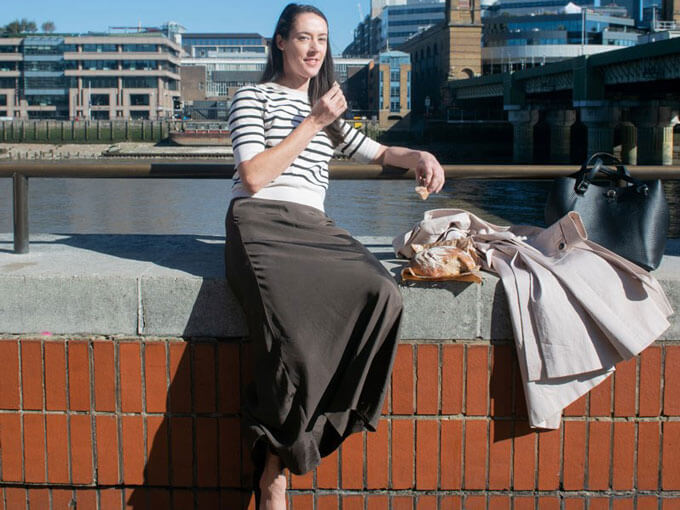Apr 6, 2017 etc

Diners are a fickle lot. So fickle that what draws them through the restaurant doors one day can seem ho-hum the next. What’s on the cards for the year ahead?
Four years on, in January, they pulled the same stunt, this time at Grey Lynn’s Pocket Bar. The stars and stripes aligned and I somehow found myself at the front of the queue. It did not feel good. I was suddenly very aware of how irrational dropping everything to eat a burger at 11am was; pleased I could justify my apparent desperation as journalistic curiosity; embarrassed I knew one of the staff working at the event. After passing on the purchase of an In-N-Out T-shirt (which were mysteriously flying off the shelf), I ate my salty burger in the car while watching the queue go from five people to 50 in 10 minutes.
In the space of four years, you’d think pop-ups would have gone the same way as flashmobs, but it seems hunger for culinary novelty is impossible to satisfy. Google Trends suggests our taste for burgers hasn’t peaked yet, though I have a feeling it’s about to.
It’s important to stress the word “feeling” — trend prediction is by definition spurious, informed by hunches over anything quantitative. Perhaps that’s why Eater.com’s Official Megalisticle of 2017 Food Trends Listicles features over 80 ingredients, global cuisines and styles of eating that People of The Internet have staked their bets on.
But back to burgers. Auckland has been riding that wave since Mimi Gilmour’s Ponsonby institution Burger Burger opened its doors in 2014. Before then, demand for gourmet burgers had been building through chains such as Burgerfuel, but it took off with Burger Burger and its competitors Mouthful’s Better Burger and part-time pop-up Bearded Clam.
Food trends are cycling faster than in the past decade, spawned by — and spawning — the culture of novelty-seeking. Deciding where to go for breakfast, lunch and dinner has become orienteering for the Insta generation.
Food, like fashion, is a form of both social equalisation and differentiation, of social status and individual preference. More than a century ago, German philosopher George Simmel argued that fashion doesn’t exist in classless societies; it thrives on social strata, where the elite constantly seek new ways to differentiate themselves.
Today, of course, it flows both ways: a trend can “trickle down” from the top — we can probably thank NOMA for peak sandy ceramic plates — and vice versa, like the poshing-up of burgers. As Auckland’s poverty gap widens — a 10th of New Zealanders hold almost 60 percent of the country’s wealth — we’re likely to see the cycle of embracing and abandoning food trends accelerate. The fact you can order a $20 burger at Augustus Bistro or a $5 one at McDonald’s suggests we’ll soon see the burger trend die. Al Brown, for one, reckons “burgers are done”. So what’s next?

Prediction 1
The return of bread & pasta
Coffee Supreme CEO Al Keating reckons 2017 will be the year of “unadulterated” bread. “We all love it, we miss it dearly,” he says. “We just need some hip, trusted foodie to dust it off and serve it up again, right?”
While the Verners are leading that charge, they’re also anticipating competition, with new recipes such as a darker Danish rye, created in collaboration with an Auckland brewery, in the works.
Jerome Ozich is a baker the Verners might like to keep an eye on. Last October, he began handbaking and delivering slow-fermented sourdough loaves to order. The environmental benefits of baking with New Zealand-grown biodynamic and organic grains were a motivating factor, he says. “It’s a choice I can make to start caring for the soil we need so dearly to keep producing nutritious food for generations to come.” Currently dependent on out-of-hours use of a bakery, Ozich aims to expand the business this year.
After a good few years of carb-maligning and gluten-fearing, it’s no surprise that bread would make a comeback. Auckland food writer Leisha Jones, who is something of a sandwich connoisseur, concurs. “We’ll see more people perfecting the art and science of bread-making and handmade pasta, and there will be a doughnut shop in every suburb.” Auckland food market regulars The Pie Piper have launched “Doornuts”, a new door-to-door doughnut-delivery service, and Hip Group restaurant Amano , which opened in Britomart late last year, prides itself on (you guessed it) New Zealand grains milled on site, which are used to make fresh pasta and bread.
The fact that bread is about to make a comeback speaks, in turn, to wider trends: an appreciation of provenance over automation, and increased awareness of the environmental impacts of food. Like other fermented foods, sourdough is part of the broader slow-living trend that has gradually become mainstream.

Prediction 2
Restaurants get real
In this post-truth world, we long for stuff we can trust. That’s partly what led a group of independent restaurateurs to join forces with Damaris and Renee Coulter, owners of K’ Rd restaurant Coco’s Cantina . Their new website, The Realness, is intended as a consumer guide to distinguish owner-operated businesses from larger restaurant groups, helping diners “who value real experiences and are open to the difference a personalised one-off eatery offers”. There are strict membership rules to deter marketeers posing as independent restaurateurs: the owners of the business must work in it; the premises cannot exceed one site; proteins must be ethically sourced, and corporate partnerships of the increasingly common “we’ll pay for the fit-out of your bar if you use our portfolio of drinks” kind are strictly forbidden.
The site is also an attempt to resist trendiness (the irony of it appearing in this story won’t be lost on them). Nose-to-tail bistro Cazador , in business for 30 years, is among the members. Co-owner Rebecca Smidt believes an increased consumer interest in authenticity will “push restaurants to be more responsive to our own context rather than follow what’s happening in Copenhagen, or wherever else is trendy, to be more aware of our local environment, and to focus on the meaning of working in this business — to host, to innovate, to nourish, to entertain, to indulge, to comfort and to educate”.
The scale of Al Brown’s restaurant empire — which includes Metro Top 50 mainstays Federal Delicatessen and Depot — means it doesn’t meet the criteria for The Realness, but he is seeing growing diner demand for authenticity. “So much of it is relationship driven,” he says. “Not just me knowing the grower or winemaker, but all our staff knowing them. We feel like we’re really connecting, whether it’s our cooks going out to the oyster farm in Mahurangi or going off to do vintage [harvesting grapes].”
Depot’s 2011 opening created a palpable impetus for change in Auckland’s dining scene. Its prominence galvanized independents in the face of SkyCity’s dominance, but it also shone a light on the bounty of New Zealand. “We realised that if we could grow sauvignon blanc we could probably grow olives, if we could grow olives we could grow pinenuts, if we could grow saffron we could grow truffles. It’s nearly embarrassing what this country can produce,” says Brown.
Six years on and Auckland diners about to order fish want to know how it was caught. In 2017, if you’re not ready with a quick supply of honest answers, you’re old news.

Prediction 3
Increasing diversity
The fact we are growing previously import-only ingredients is a boost to the flurry of restaurants and cafe openings that celebrate the food cultures of generations of immigrants.
Take Samir Allen and his mum Liane Farry’s Lebanese restaurant Gemmayze St , the culmination of the Farry family’s 129-year relationship with New Zealand. In the past several decades, Farry has noticed a dramatic shift in attitude towards cultural diversity. When she opened her first restaurant in 1996, it didn’t occur to her to hang framed family photos on the walls. “At Gemmayze St, Samir has the whole family up there.” What was once a privately experienced pride in her cultural heritage is now a public celebration, as she works with her son to serve dishes that have personal meaning to diners eager to embrace Lebanese traditions.
Auckland’s relatively nascent dining scene owes much of its richness to the confluence of cultures that inevitably occur in the world’s fourth-most-diverse city. In fact, it owes its very existence to it, from the arrival of the first Italian espresso machines in New Zealand in the 30s, to the opening of Chinese and North American restaurants in the 60s.
Multiculturalism in our dining scene isn’t new, but in 2017, there is growing recognition of the differences between cuisines previously categorised by sweeping terms such as “Chinese” or “Middle Eastern”. At the same time, it’s important to remember that no culture is ever static and that restaurants run by immigrants old and new are still Auckland restaurants first, their relationship with the dining scene a two-way street.
Language used to describe immigrant-owned Auckland restaurants sometimes suggests a cultural scavenger hunt. Take this headline from the Denizen website: “Ever tried Afghan cuisine? Neither had we, until…” How about we stop perpetuating the notion that “other” cultures are an exotic experience to be ticked off a list, rather than an intrinsic part of the city’s demography? It’s time for the cultural pot to be stirred. Cringeworthy headlines would be a great place to start.

Prediction 4
Holistic goes ballistic
The Cult Project, the ongoing dining pop-up of former Matterhorn Wellington and Orphans Kitchen chefs Carlo Buenaventura and William Cook, exemplifies a new wave of chefs who view cultural background as just one aspect of their identity. Buenaventura is originally from the southern Philippines, Cook is from the UK but grew up in Wellington, and together they champion frugal approaches to food like foraging, root-to-leaf and nose-to-tail cooking, and the use of “secondary” vegetables and meat cuts.
They also collaborate with their front-of-house team because, says Buenaventura, “everything we serve has to relate to us, to have meaning, not just to the chefs but to everyone”. Inspiration comes from the work they have done together in other professional kitchens, from Instagram, and through travel — Buenaventura hopes to take his team to the Philippines next time he visits, round-two of a research trip he and Cook took recently to Peru, the cuisines being historically related.
The Cult Project pair describe their approach to cooking as “holistic”, inspired by the idea of an idyllic time when people would hunt and gather, harvest their own vegetables and use every bit of them — the roots for medicinal purposes, the leaves for tea, and so on.
“There are so many trends, like fermenting, food waste, cooking with fire,” says Buenaventura, “but for many of us they’re not actually trends but a way of life we’ve been following for ages. Back home, we barely use our stovetops, we always use wood-fire as it’s cheap, accessible, sustainable.”
Brown reckons holistic cooking has captured the imagination of the dining scene because New Zealanders have “always been a frugal bunch, we’ve always been pickling, making relishes and stewing fruit; it’s smart to be using all the produce.” Chef and food writer Ruby White, of pop-up series of dinner events Miss Changy, thinks 2017 will see more people looking to their own gardens for similar reasons. “Most of us have never farmed or hunted,” she says, “so the idea of living off our backyard weeds is kind of cool — to me anyway. There’s no effort required, and you can eat the little bastards.”

Prediction 5
Plant-based diets get dirty
My flatmate left Lucky Peach’s Power Vegetables! on the kitchen bench over summer and I quickly became obsessed. Published last year, the cookbook already has a cult following. It’s effectively the doctrine for a new movement of sustainable and plant-based eating that’s not shrouded in the piety of the clean-eating movement.
Reliable statistics about the increase in plant-based diets here are hard to come by, but last year in the United Kingdom, a credible survey of 10,000 people aged 15 and over found the number of vegans had risen 350 per cent in the previous decade.
This year, it follows that we’re likely to see the opening of more cafes and restaurants like Yeshe Dawa’s The Midnight Baker, in Mt Eden, where jackfruit is used as a substitute for pulled pork and dates are used for caramel, as well as The Realness-style pledges to use ethical ingredients.
Some things will never die. Like pop-ups. The fact they’ve been referenced six times so far in this story is as strong a sign as any. As Auckland rental prices rise, we’re likely to see even more resourceful restaurant operations, whether it’s shared commercial kitchens or shared coffee-roasting facilities. These models have been successful overseas and make sense in a climate of innovation. Meanwhile, mobile food vendors and pop-ups, like The Cult Project, will likely find permanent homes this year, paving the way for newcomers to follow the now-familiar path.
Global trends don’t always translate to Auckland. Some flop as quickly as the cronut, others stick around for an inexplicably long amount of time (I’m looking at you, soggy Ottolenghi-style salads and under-flavoured ceviche).
To cultivate a weathertight hospitality business in a city so prone to fads is an art. If you look at those that have already weathered two or even three decades of it, there are a few common themes. Cazador, Prego , O’Connell St Bistro, Oh Calcutta and Miller’s Coffee — to name a few — have strong identities because they’ve never strayed far from their original, customer-focused intention.
They’re also typically known for a particular host on the floor, or barista on the machine, who makes an effort to remember your name. When they innovate, they do so within the internal logic of a formula already succeeding.
My final 2017 prediction? A renewed appreciation for old favourites. Trends can only trend for so long, and my feet are sore from chasing burgers.
This article is published in the March- April 2017 issue of Metro.
Get Metro delivered to your inbox

/MetromagnzL @Metromagnz @Metromagnz






